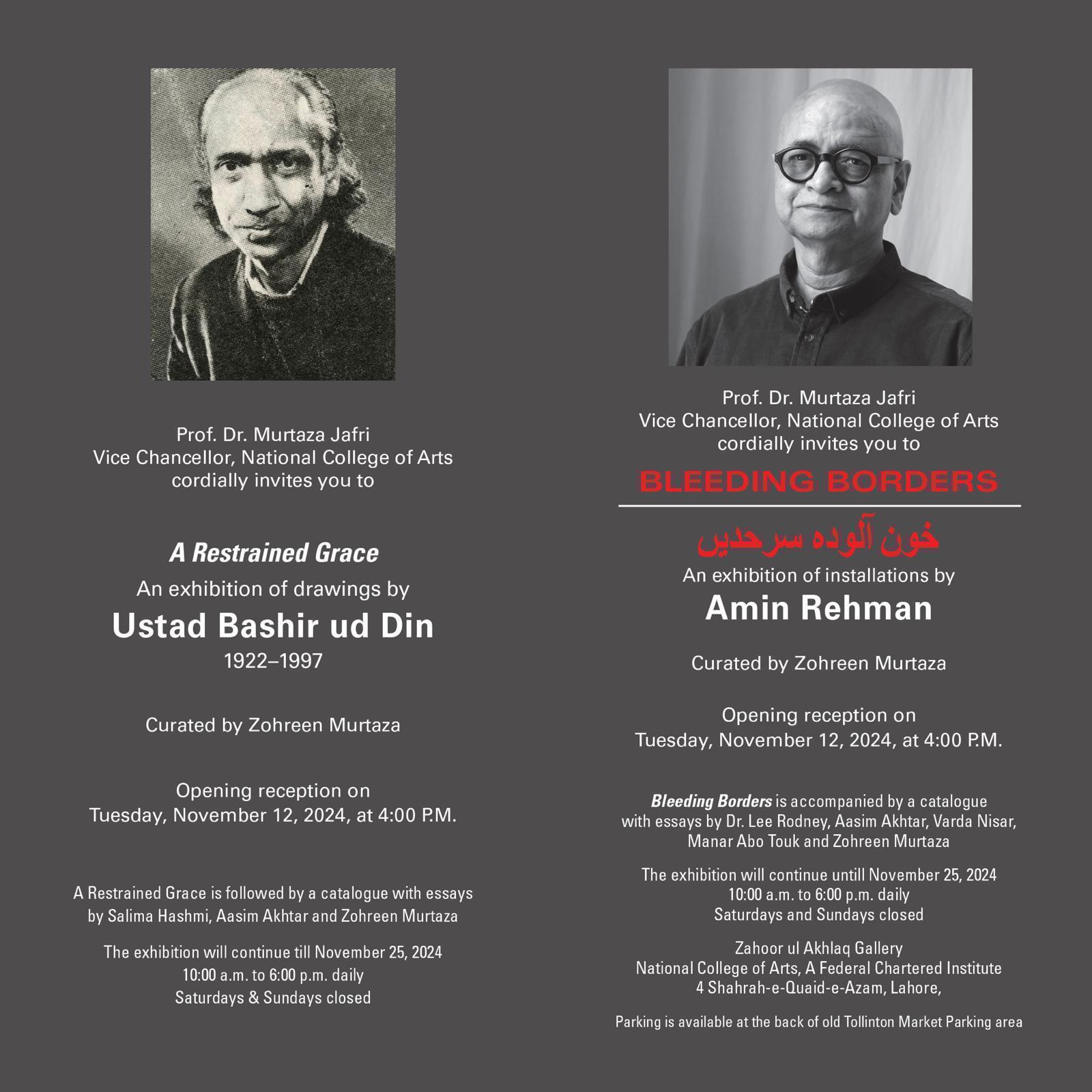Lahore, Pakistan: In connection with the celebrations marking 150 years of Mayo School of Arts and National College of Arts, Lahore, Pakistan, the opening ceremony of “The Drawings of Ustad Bashir ud Din—A Restrained Grace ” and Amin Rehman’s installation project “Bleeding Borders” will be held on November 12, 2024, at 4 p.m. at the Zahoor ul Akhlaq Gallery at National College of Arts. This exhibition will travel to the National Art Gallery, Islamabad, from December 2 to 15, 2024.

“Bleeding Borders” and “Ustad Bashiruddin- A Restrained Grace” feature two separate bodies of works exhibited at the Zahoor-ul-Akhlaq Gallery in NCA. The latter features drawings, projections of paintings and archival material related to Ustad Bashiruddin who was a student and teacher at Mayo School of Industrial Arts followed by National College of Arts, Lahore. The institution was renamed as it underwent restructuring in 1958 and became the National College of Arts, Lahore. The second set of artworks features contemporary art by Amin Rehman who is a contemporary artist based in Toronto, Canada.
Ustad Bashir ud Din was born and raised in Kasur, Punjab. He received his art education from the Mayo School of Arts Lahore and taught at the Mayo School and National College of Arts Lahore from 1953 to 1982. He was a master miniature painter known for his wash painting style and drawing. He worked in the Department of Fine Arts till 1982 after which he retired. He went on to nurture and guide generations of students who became famous artists and designers. Forty drawings of Ustad Bashir ud Din’s will be on display for the first time in this exhibition. This section of the exhibition is accompanied by a catalogue with academic essays on Ustad Bashiruddin written by Mrs. Salima Hashmi, Aasim Akhtar, and Zohreen Murtaza.
In the second gallery, Ustad Bashir ud Din’s son Amin Rehman exhibits his recent project titled, “Bleeding Borders.” Rehman’s deep knowledge of history inspired him to travel ancient trading routes through the region’s contemporary borderlands. His artworks are the result of on-site research and documentation that explores the living situation of communities surviving along Pakistan’s borderlands, which include India, Iran, and Afghanistan. Rehman investigates the migration of people through trade routes and traces metaphorical steps that Central Asian invaders took to reach India. The resulting artworks guide us with untold and hidden stories, shedding light on various poor living conditions and repercussions of colonial rule. Often they move across borders for economic and social reasons owing to their cultural and social ties across both sides. The larger body of work in this series comments on political interests, foreign intervention, histories of invasions, and the living situations at the borders. Amin Rehman is exhibiting forty mixed-media works, including neon signage and video projections.
“Bleeding Borders” is accompanied by catalogue texts from Dr. Lee Rodney, Manar AboTouk, Varda Nisar, Asim Akhtar and Zohreen Murtaza.
